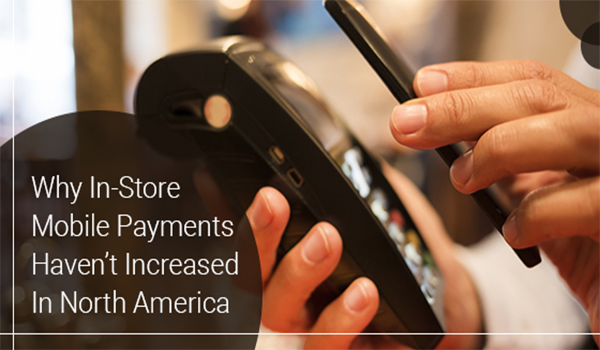
Technology has changed the ways in which consumers purchase products and services. The growth of mobile users has forced businesses to provide new ways for their customers to find their products and engage with their brands.
In-store mobile payments have been one of the latest developments that businesses hoped would increase revenue, build brand loyalty and provide greater convenience to customers.
But the technology has so far failed to take off in North America. Understanding the needs of consumers helps businesses determine the preferred payment methods of consumers and the best ways to cater to their needs.
The introduction of in-store mobile payments
The Google Wallet was one of the first apps to introduce mobile payments to consumers. It allows users to pay for products and services with mobile devices. Similar platforms such as “Quick Tap” made their way to markets in the UK and other countries.
Mobile payment solutions give consumers an alternative to using cash or debit cards. Many consumers have expressed an interest in using their smartphones to pay for products or services.
Millennials who earn more than $100,000 per year are most likely to adopt new technologies such as in-store mobile payment tools. But these factors have failed to translate into the predicted growth of in-store mobile payments.
In-Store mobile payments aren’t taking off
In-store mobile payment tools initially showed promise. But the number of people who use these payment methods has failed to increase over time.
Although cash has become less popular, and consumers are becoming aware of in-store mobile technology, new users don’t seem to be adopting it at the expected rate.
In addition, companies such as Google, Apple, and other retailers continue to promote mobile payment technology. Despite this push, approximately 19 per cent of users make mobile payments at least once a week.
In North America, debit cards are used by approximately 59 per cent of consumers, and credit card payments have reached about 53 per cent.
The future of in-store mobile payments
There are still many people who see a future for in-store mobile payments. But the biggest challenge to its growth is the fact that the current system still works for most consumers. Although security issues do happen, most of today’s consumers feel comfortable using their debit and credit cards when purchasing offline and online.
Mobile payments create opportunities for consumers and merchants. Businesses must stay ahead of the technology curve in order to provide a memorable and easy experience for customers.Falling behind can result in the loss of customers to industry competitors who use mobile payments and other technologies to provide an interactive experience.
In-store mobile payments haven’t taken off in North America. Although they offer a new level of convenience and ease for consumers, many have chosen to continue using traditional payment methods.
The growth of mobile payments would give businesses new opportunities for engaging with customers, increasing revenue, and growing their brands.
